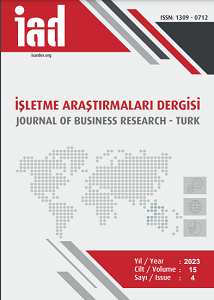Çalışanların İş Güvenliği Katılımında Yönetimin Rolü: Kavramsal Bir Model Önerisi
The Role of Management in Employee Occupational Safety Participation: A Conceptual Model Proposal
Author(s): Metin Bayram, Bülent Arpat, Dilek NamSubject(s): Business Economy / Management, Labor relations, Management and complex organizations
Published by: Orhan Sağçolak
Keywords: Fatalism; Rule violation; Management involvement; Employee participation; OHS training and resource allocation;
Summary/Abstract: Purpose – The main purpose of the study is to reveal the impact of top management in reducing occupational accidents through an institutional and holistic model proposal. Design/methodology/approach – The research is descriptive and hypothesis-oriented and was conducted by analyzing secondary data. The factors that make up the research model were taken from the dimensions of safety climate and safety culture. The dimensions that make up the model are fatalistic belief, rule violations, management commitment and involvement in safety, OHS training, resource allocation, and employee participation and empowerment in safety activities. In this context, the focus was on determining the causal relationships that may arise between the aforementioned dimensions based on the theoretical framework. The two dependent variables of the research are "employee participation and authorization" and "OHS training and resource allocation". In addition, the causal relationship between these dependent variables is also considered worth mentioning. Therefore, it is emphasized that safety-related activities in workplaces are formed through managerial attitudes. As a result, the causal relationships showing the order of antecedence and succession of the dimensions affecting safety climate constituted the main subject of this research. Findings – Hypotheses were predicted within the framework of the research model proposal. Based on the findings from the literature, fatalism affects rule violations; rule violations affect management involvement and commitment; management commitment and involvement affect employee participation and empowerment; management commitment and involvement affect OHS training and resource allocation; and OHS training and resource allocation and employee participation and empowerment mutually affect each other. Based on this, a model is proposed. Discussion – Within the framework of the theoretical structure of the model proposed in the study, based on the findings in the literature, it is thought that improvements that can be made by senior managers can significantly reduce occupational accidents.
Journal: İşletme Araştırmaları Dergisi
- Issue Year: 15/2023
- Issue No: 4
- Page Range: 2846-2862
- Page Count: 17
- Language: Turkish

